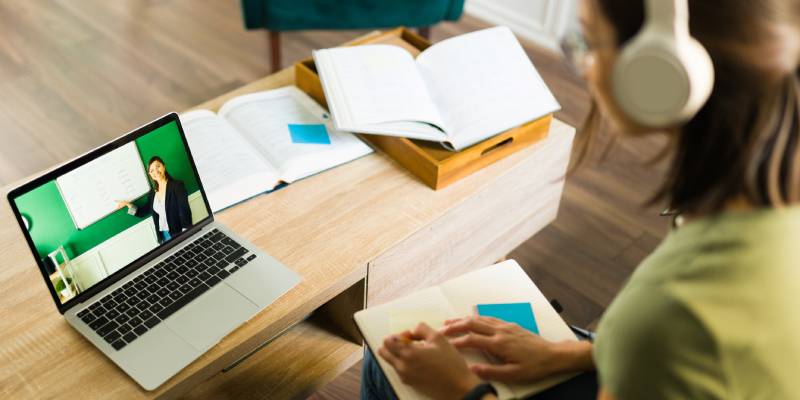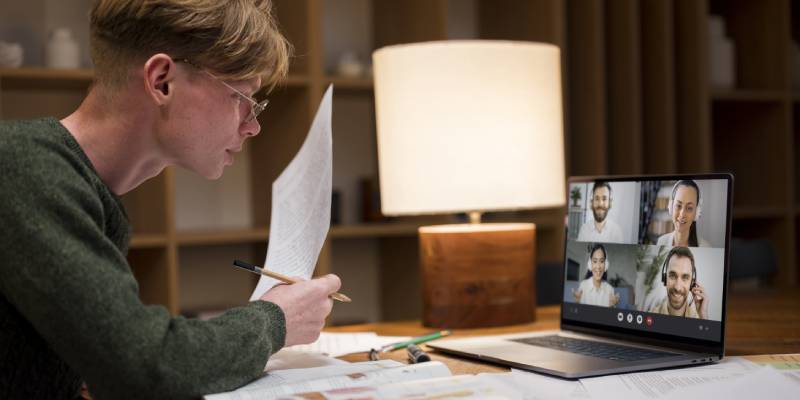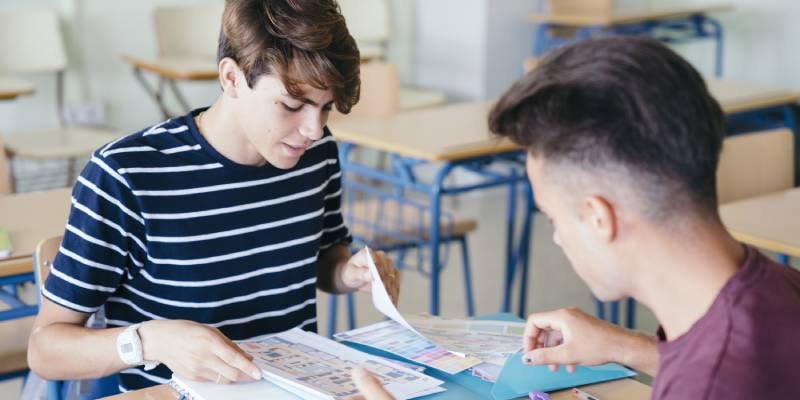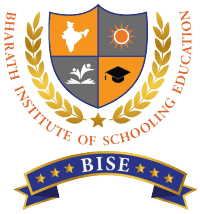Introduction to Open Distance Learning

It, often referred to as distance education, is a mode of learning that allows students to pursue education without being physically present in a traditional classroom setting. It transcends geographical boundaries, making education accessible to a diverse range of individuals. Whether it’s a full-time working professional seeking higher education or a stay-at-home parent aiming to upskill, Open Distance Learning offers the flexibility needed to juggle personal and academic commitments.
The Evolution of Distance Education
Distance education has a rich history dating back to the 19th century. However, advancements in technology, particularly the internet, have revolutionized the way education is delivered at a distance. What once relied on postal correspondence courses has evolved into a seamless digital experience where learners engage with multimedia-rich content, participate in virtual classrooms, and collaborate with peers across the globe.
Advantages of Open Distance Learning

- Flexibility Redefined: One of the standout advantages of ODL is its flexibility. Learners can craft their learning schedules around personal and professional commitments, allowing them to pursue education at their own pace.
- Global Reach: ODL transcends geographical boundaries, enabling individuals from various corners of the world to access quality education. This global reach fosters cross-cultural interactions and enriches the learning experience.
- Cost-Effectiveness: ODL eliminates the need for commuting, textbooks, and physical facilities, making it a cost-effective alternative to traditional classroom learning. Learners can access a plethora of online resources at their fingertips.
- Lifelong Learning: With ODL, learning doesn’t have an expiration date. It caters to learners of all ages, encouraging continuous skill development and the pursuit of knowledge throughout one’s life.
- Personalization: ODL allows learners to choose courses that align with their interests and career goals. This personalization ensures that individuals engage with content that resonates with them, enhancing motivation and engagement.
Overcoming the Challenges of Open Distance Learning
While ODL offers numerous advantages, it’s not without challenges. One major hurdle is the lack of face-to-face interaction, which can sometimes lead to feelings of isolation. Additionally, self-motivation and time management become crucial skills for ODL students.
Institutions need to provide robust support systems, including online tutoring and peer interaction platforms, to ensure that learners stay engaged and motivated throughout their learning journey.
Technology's Role in Enhancing ODL
- Interactive Learning Platforms: Technology has paved the way for interactive learning management systems, where learners can access multimedia-rich content, participate in discussions, and engage with assessments seamlessly.
- Virtual Classrooms: Live video conferencing tools bring the classroom experience to the digital realm. Learners can interact with educators and peers in real time, fostering collaborative learning and meaningful discussions.
- Engaging Content Formats: Technology enables the creation of diverse content formats, including videos, animations, simulations, and interactive quizzes. This variety keeps learners engaged and caters to different learning styles.
- 24/7 Accessibility: ODL leverages technology to offer 24/7 accessibility to learning materials. Learners can revisit lectures, resources, and assignments whenever it suits them, enhancing convenience and flexibility.
- Global Connections: Through technology, learners can connect with experts, educators, and fellow students from around the world. This global network broadens horizons and exposes learners to diverse perspectives.
A Global Perspective on Open and Distance Education
Open And Distance Education transcends borders, enabling cross-cultural interactions and diverse perspectives. Students from different backgrounds come together in virtual classrooms, enriching discussions and broadening horizons. This global perspective prepares learners for an interconnected world, equipping them with skills to thrive in an increasingly multicultural and globalized society.
Future Trends in Open Distance Learning
- Immersive Experiences: The future of ODL will likely involve immersive experiences through virtual reality (VR) and augmented reality (AR). Learners can step into virtual classrooms and engage with content in entirely new ways.
- Personalized Learning Pathways: Advanced algorithms and AI-driven platforms will create personalized learning pathways for each learner. Content will be tailored to individual needs, optimizing engagement and knowledge retention.
- Blockchain Credentials: Blockchain technology could revolutionize credentialing in Open Distance Learning. Learners’ achievements and qualifications can be securely stored on the blockchain, providing a verifiable and tamper-proof record.
- Microlearning Modules: Bite-sized learning modules will become more prevalent, allowing learners to acquire specific skills quickly. These modules can be stacked to build comprehensive knowledge over time.
- Collaborative Learning Spaces: Virtual collaborative platforms will continue to evolve, enabling learners to work together on projects, assignments, and simulations, irrespective of their physical locations.
Embracing Open Distance Learning: Tips for Success
- Set Clear Goals: Define your academic and personal goals to stay focused.
- Create a Schedule: Establish a routine that allocates time for studying, assignments, and relaxation.
- Stay Engaged: Actively participate in online discussions, group projects, and virtual classrooms.
- Use Resources Wisely: Explore the variety of online resources available to enhance your learning experience.
- Seek Support: Don’t hesitate to reach out to tutors, professors, or peers if you need assistance.
Case Studies: Successful Implementations of ODL
Case Study 1: The Open University (UK)
The Open University is a pioneer in Open Distance Learning, having transformed the lives of millions through accessible and flexible education. Its online platform provides a plethora of courses across diverse subjects, catering to learners worldwide.
Case Study 2: Indira Gandhi National Open University (IGNOU)
IGNOU, based in India, has championed distance education, especially for learners who cannot attend traditional classes. It offers a wide array of undergraduate, postgraduate, and vocational programs through Open Distance Learning.
Comparing ODL with Traditional Classroom Learning

The debate between Open Distance Learning (ODL) and traditional classroom learning resembles a dynamic tango between innovation and tradition. Each approach brings its distinct advantages and challenges to the table. Let’s waltz through the comparisons between ODL and traditional classroom learning:
Flexibility vs. Structure: ODL offers unparalleled flexibility, allowing students to learn at their own pace and schedule. Traditional classrooms provide structured learning with fixed timetables, fostering routine and discipline.
Global Reach vs. Local Engagement: ODL transcends geographical boundaries, connecting learners worldwide. Traditional classrooms promote local community engagement and face-to-face interactions.
Diverse Learning Styles: ODL accommodates various learning styles through multimedia content, interactive modules, and virtual labs. Traditional classrooms emphasize face-to-face interactions, catering to interpersonal learners.
Self-Motivation vs. Guided Learning: ODL demands self-motivation and time management skills. Traditional classrooms offer immediate teacher guidance and peer interactions.
Technological Proficiency: ODL hones digital literacy skills as learners navigate online platforms and tools. Traditional classrooms build interpersonal skills and offer hands-on experiences.
Personalized Paths vs. Uniform Curriculum: ODL allows learners to choose courses tailored to their interests and goals. Traditional classrooms follow a standardized curriculum.
Cost and Accessibility: ODL often proves cost-effective as it eliminates commuting and provides diverse resources. Traditional classrooms may involve commuting expenses and limited accessibility.
Collaborative Opportunities: ODL fosters global collaborations through virtual interactions. Traditional classrooms encourage in-person teamwork and networking.
Immediate Clarification vs. Self-Reliance: Traditional classrooms allow immediate doubt clarification through real-time interactions. ODL demands self-reliance and proactive communication for query resolution.
In the dance between ODL and traditional classroom learning, the right choice depends on the learner’s preferences, goals, and the pedagogical approach that resonates with them.
The Changing Role of Educators in ODL
In the dynamic realm of Open Distance Learning (ODL), educators don’t just stand at the front of a physical classroom; they guide and facilitate from the digital sidelines. As technology redefines the learning landscape, the role of educators has transformed into that of facilitators, mentors, and orchestrators of a virtual learning symphony. Let’s explore how the role of educators has evolved within the context of ODL:
- Facilitators of Digital Engagement: In ODL, educators curate and create engaging online content that transcends traditional lectures. They blend multimedia resources, interactive quizzes, and discussions to foster a vibrant online learning experience.
- Guides in Self-Paced Learning: Unlike traditional classrooms, ODL allows students to set their learning pace. Educators become guides who encourage self-directed learning, providing resources, support, and clarifications whenever needed.
- Cultivators of Collaborative Learning: Educators leverage online platforms to stimulate peer interactions. They design group projects, discussions, and virtual labs that harness the power of collaborative learning, promoting diverse perspectives and skills.
- Personalized Learning Coaches: Through digital tools, educators track students’ progress and preferences. They tailor learning pathways, suggest supplementary resources, and offer individualized guidance, catering to diverse learning styles.
- Fostering Critical Thinking: In ODL, educators design thought-provoking assignments that encourage critical thinking and problem-solving. They facilitate discussions that challenge assumptions and prompt learners to analyze concepts from multiple angles.
- Curators of Relevant Content: In a digital sea of information, educators curate up-to-date, relevant content that aligns with the curriculum. They filter through resources, ensuring learners access credible and valuable information.
- Feedback and Assessment Orchestrators: Educators use technology to provide timely feedback on assignments and assessments. They implement innovative assessment methods, including peer reviews and online quizzes, to gauge understanding.
Addressing the Accessibility Issue in Open And Distance Education
To ensure equitable access, institutions offering Open And Distance Education need to consider the technological limitations faced by some learners. Providing downloadable content, offline access options, and low-bandwidth alternatives can bridge the accessibility gap.
Accreditation and Quality Assurance in ODL
Accreditation bodies play a crucial role in maintaining the quality and credibility of Open Distance Learning programs. Institutions must adhere to rigorous standards to ensure that learners receive valuable and recognized qualifications.
Empowering Self-Directed Learning through ODL
Open Distance Learning empowers learners to take control of their education. The freedom to choose courses, set learning goals, and access resources fosters self-directed learning, a skill that’s valuable not only academically but also in professional and personal spheres.
Conclusion
Open Distance Learning has transformed education into a flexible and inclusive endeavour. It caters to diverse learners, enabling them to balance their academic pursuits with their individual commitments. As technology continues to advance, the realm of ODL is poised to offer even more innovative and immersive learning experiences.
Frequently asked questions
It can be equally effective, provided learners are self-motivated and have access to the necessary resources and support.
Yes, many institutions offer practical courses through simulations, virtual labs, and hands-on workshops to ensure a well-rounded learning experience.
As long as the institution offering ODL is accredited and recognized, employers value the skills and knowledge gained through such programs.
Time management, self-discipline, effective communication, and digital literacy are essential skills for succeeding in ODL.
While theoretical subjects can be effectively taught through Open And Distance Education, practical and hands-on disciplines might require blended learning approaches for optimal outcomes.
